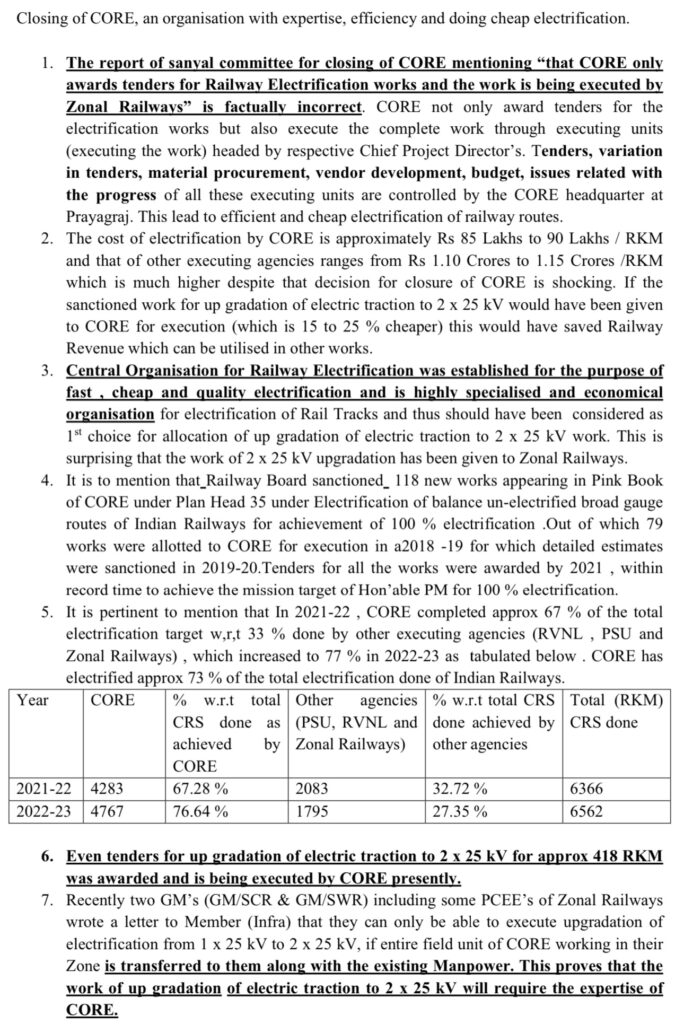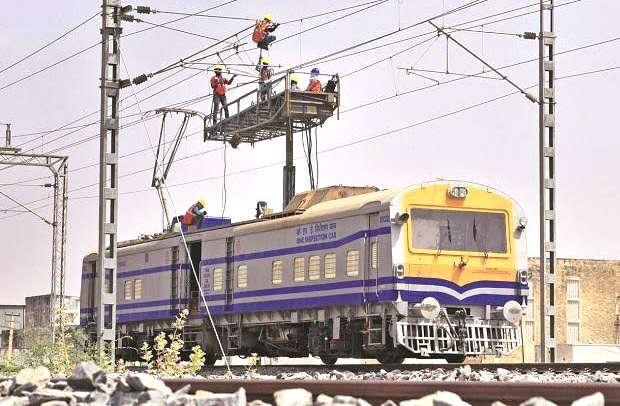Closure of CORE is a given fact, but hurried way is not the correct way!
CORE will cease to exist on 31 Dec 2023. A journey which started in 1961, ends with winding up of 2023
About CORE (Source: #CORE website)
After commencement of first Railway service between Mumbai and Thane in 1853, first electric train was run between Mumbai and Thane in year 1925 i.e., roughly after 75 years of Railway working. With industrial growth of the country and increasing need for environment friendly mode of transportation, focus in #IndianRailways gradually shifted to #electric traction. After independence of the country, first 5 year plan (1951-56) had a small target of #electrification of 141 RKM of tracks. The target kept gradually increasing and in 12th five year plan (2012-17) had a challenging #target of electrification of 6500 RKM of tracks. The targets have increased manifold every year when the current government took over.
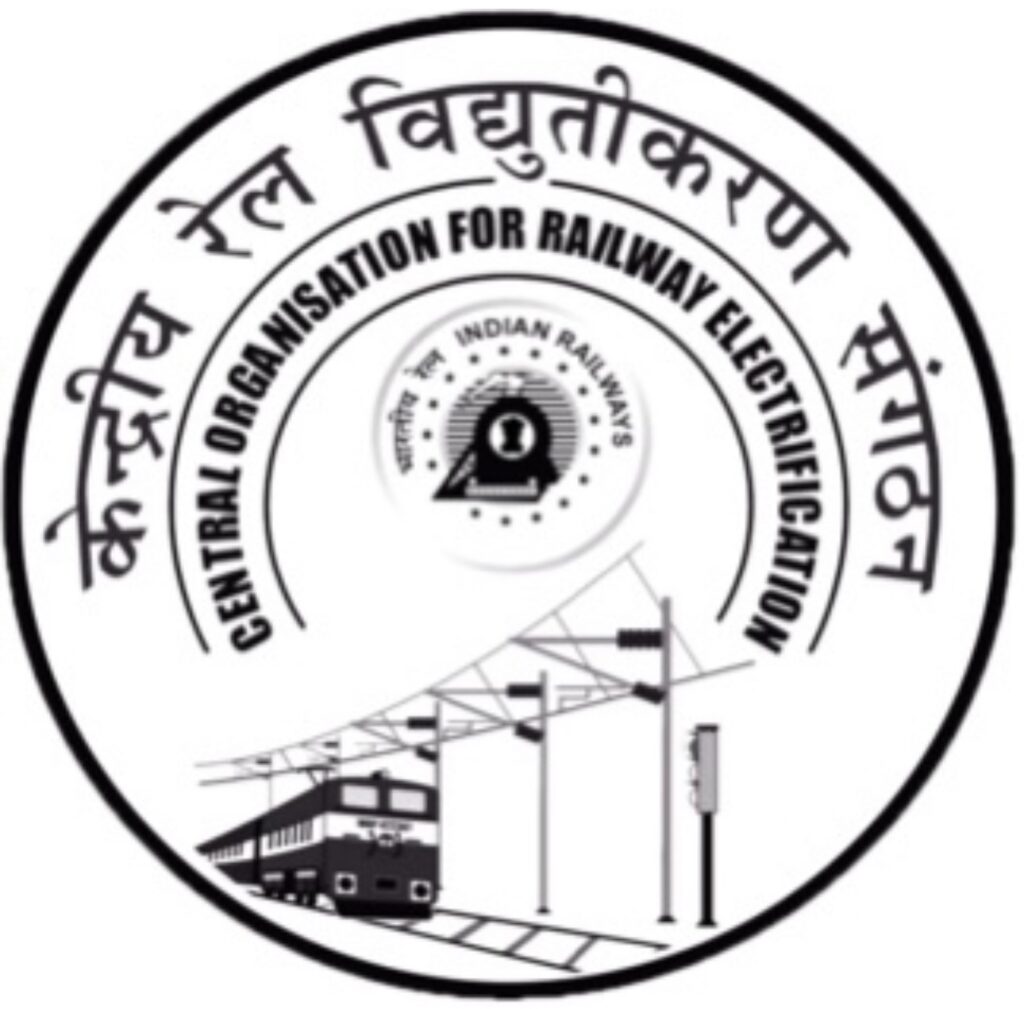
Central Organisation for Railway Electrification as an organisation was set up in 1961, with mandate to #electrify Indian Railway tracks as approved by Govt. of India. The unit initially based at #Kolkata was called #PORE (Project office for Railway Electrification) and was headed by an Engineer-in-Chief. However, owing to growing emphasis on electrification, a separate unit called Central Organization for Railway Electrification (#CORE) was set up, with headquarter at #Prayagraj. The unit is currently headed by a General Manager. Current #GM retires on 31 Dec, 2023 the day this unit shuts down.
In recent years, the Central Organization for Railway Electrification (#CORE) has contributed the majority of total electrified sections of Indian Railway.
It has electrified 58,812 Route kilometers (#RKM) that is about 90% of the total #Broad_Gauge (#BG) network of Indian Railways (65300 RKM) by March 31, 2023. CORE plans to electrify all BG routes of Indian Railway by December, 2023.
In order to electrify important railway routes for harnessing maximum benefits from their traffic potential, eight project units of CORE are operational at #Ahmedabad, #Ambala, #Bangalore, #Chennai, #Kolkata, #Jaipur, #Lucknow and #Secunderabad.
The Beginning of End
CORE was constantly caught in the middle of conflicts between the #Electrical and #Mechanical departments. There was a belief that #CORE was biased towards #contractors, while the contractors themselves were driving the #RE agenda. However, this misconception was dispelled when the current government examined the cost of running a train on #electric power versus #diesel. Previously, energy figures were presented, but the Prime Minister insisted on knowing the actual cost.
The idea of achieving 100% #renewable energy was initially proposed by #PiyushGoyal, who served as the Minister of State for Power. Mr Goyal and his secretary wrote to the then Chairman, #AKMital, stating that the Ministry of Power would provide funding for the electrification of remaining unelectrified tracks, with a long-term profit sharing agreement based on the resulting savings.
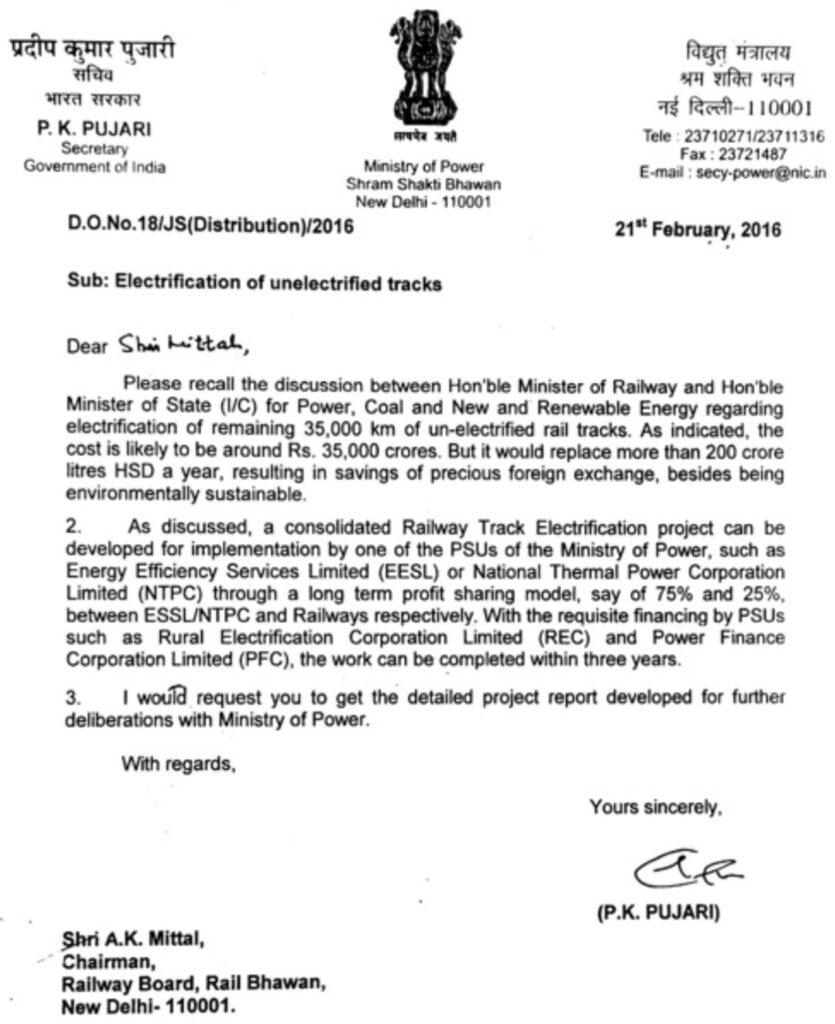
But Shri A. K. Mital provided a diplomatic response, stating that this would not be feasible. However, the situation changed when #SureshPrabhu, the Railway Minister, had to step down after the #Khatauli accident, and #PiyushGoyal took over. Mr Goyal was determined to understand why it was not practical and the focus shifted. Like pursuing the #unigauge concept from the 1990s, #IndianRailways embarked on a new journey towards unified traction.
During this time, the #Sanyal committee was formed and it recommended the closure of redundant organisations. One such organization was CORE.
Misunderstanding of Sanyal Committee
The #Sanyal _Committee mistakenly believed that the Central Organization for Railway Electrification (CORE) was only responsible for #tendering, while the actual work was carried out by the #ZonalRailways. However, this is far from truth. The Indian Railways Organization for Alternate Fuels (#IROAF), Workshop Project Organization (#WPO), and the Central Organization for Modernization of Workshops (#COFMOW) were also involved in tendering and did not directly engage in field work unlike CORE.
CORE had regional offices led by Chief Project Managers (#CPMs) or Chief Project Directors (#CPDs). CORE centralized its tendering process, allowing for demand aggregation and reducing the number of #tenders required, thus providing advantages in terms of volume.
It is important to note that no project office can continue indefinitely.
The Mistake
The #mistake which #RailwayBoard under #Sudheer_Sense did was to apply their techniques of mismanagement. Closure of running organisations with field units can not be done with Office Memos from Rail Bhawan.
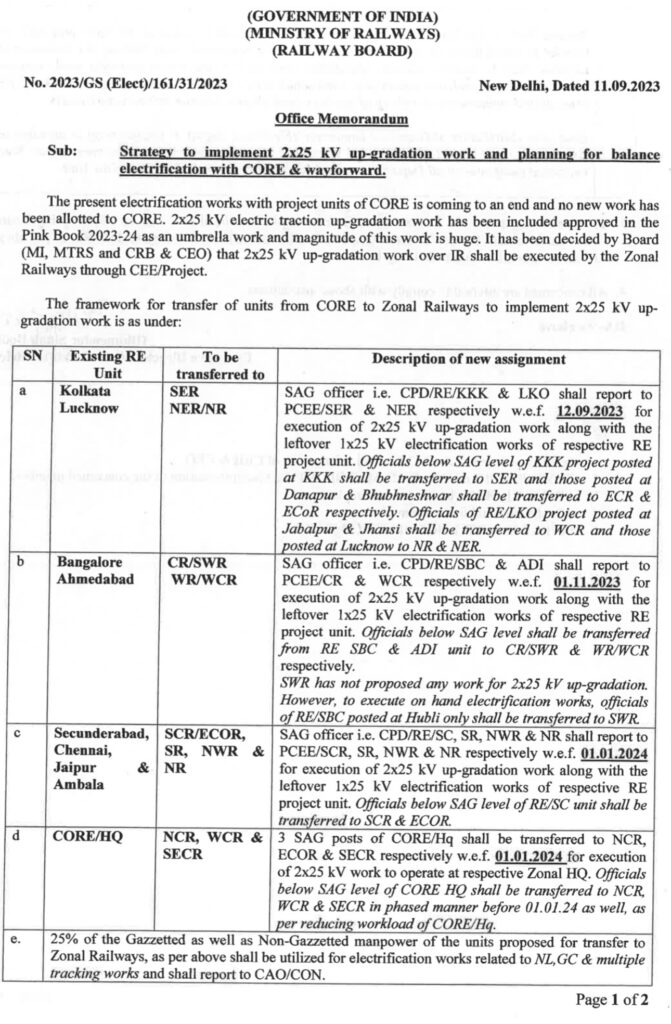

Rail Bhawan should have constituted committee of CPDs with Zonal Railways which it was serving to create a road map for transition. With clear objective of its #closure, it was important to create clear #roadmap.
The Status
While CORE has started shooting letters to various Zonal Railways to take over the projects, Zonal Railways are pushing back. They want, understandably fully functional units.
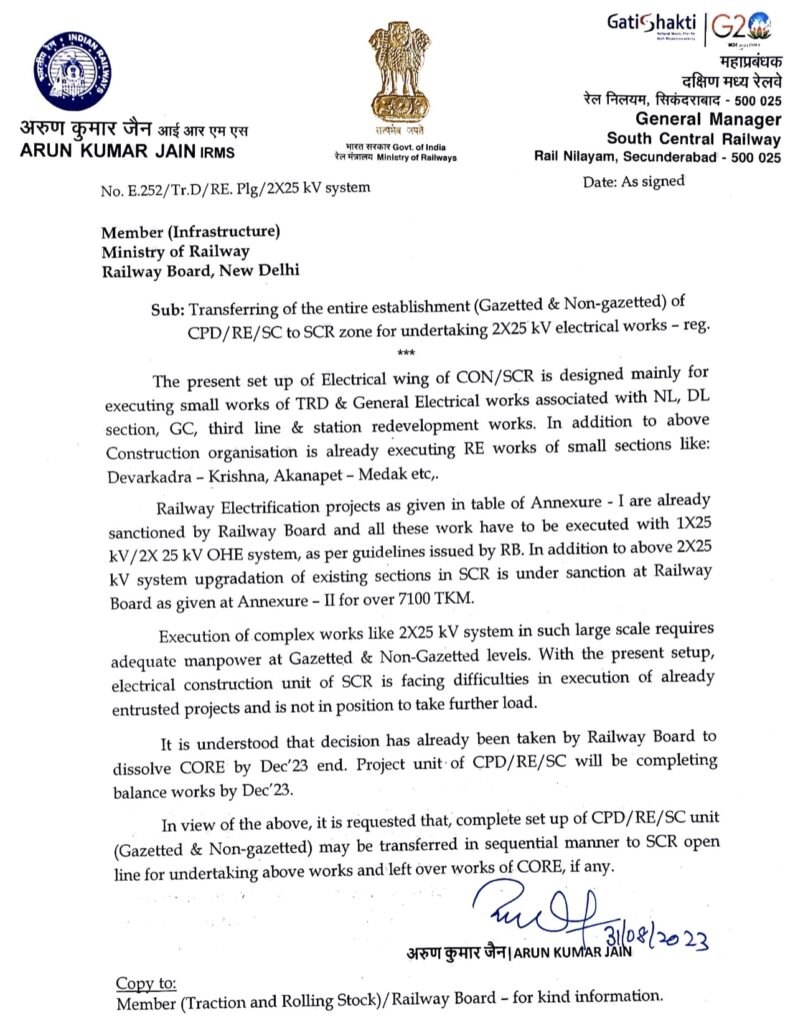
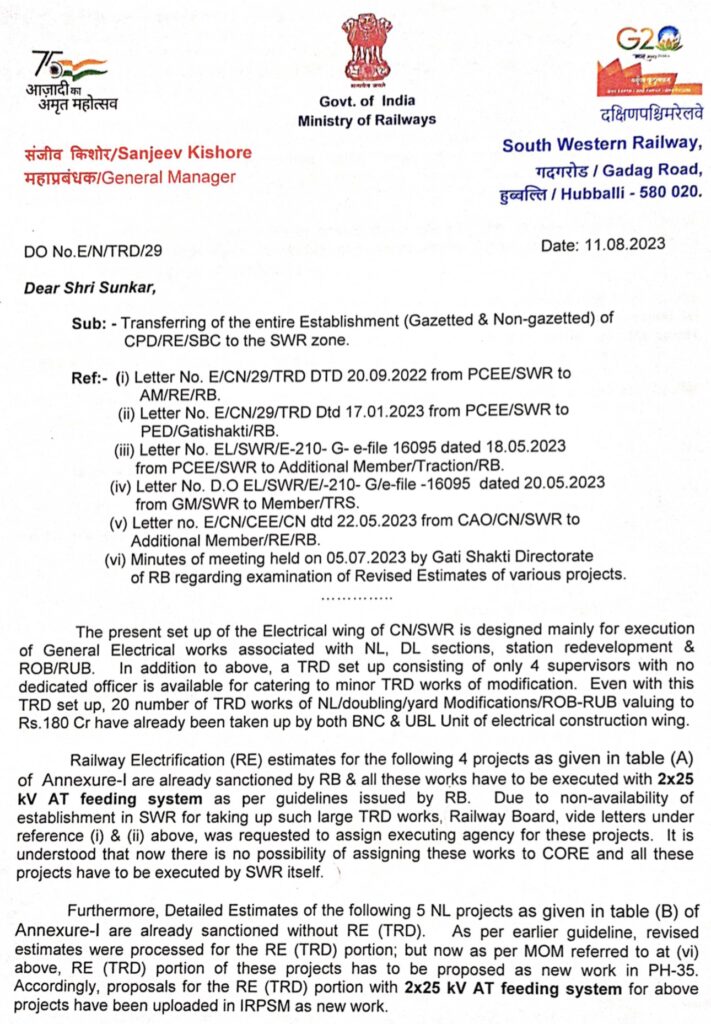
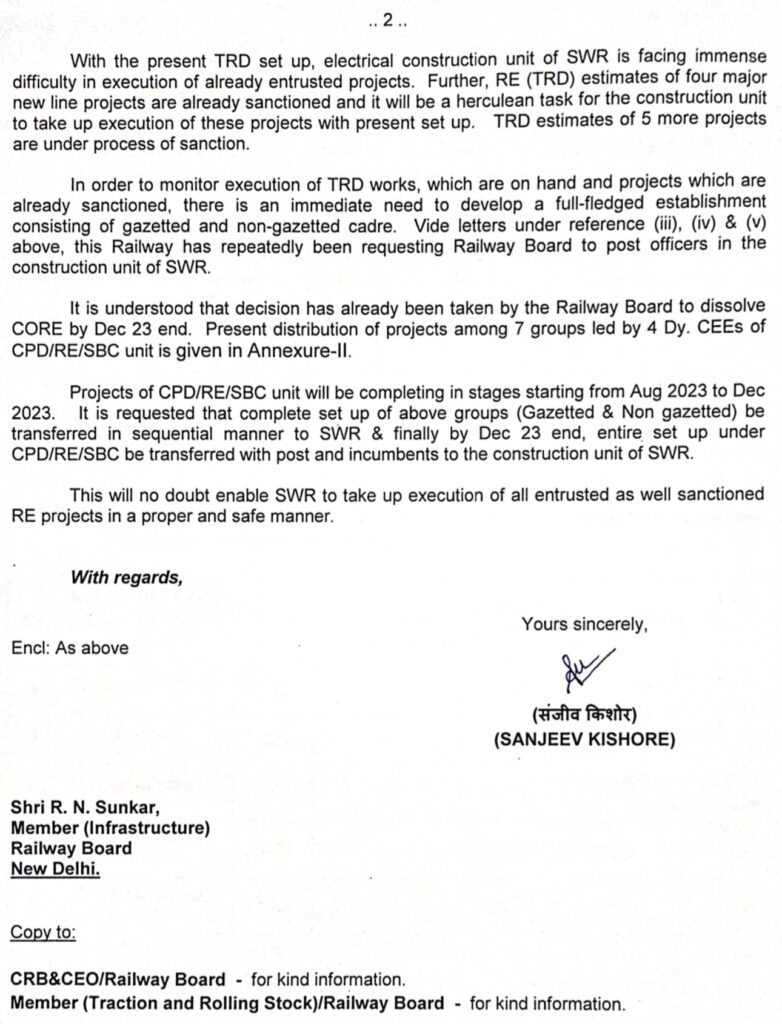
Railway Board needs to understand that pushing from the top will only create #confusion. Instead of being constrained by the pressure of incumbent GM retiring on 31 Dec 2023, should consider phase wise plan. Already #CORE and #RE has suffered lot of damage because of officers like #GhanshyamSingh. The assets which are being created will operate #IndianRailways for another 50 years.
When Mr #Budhprakash, a civil engineer, was General Manager of CORE, he wrote to Railway Board about need to close CORE.
Every individual is aware that death is inevitable, but that doesn’t suggest that one should rush towards it. Just like no living creature is immortal, institutions and organizations are also not eternal. Hence, it was inevitable for CORE to eventually shut down. However, it is unjustifiable to hastily close it without proper planning, discussions, or research.
